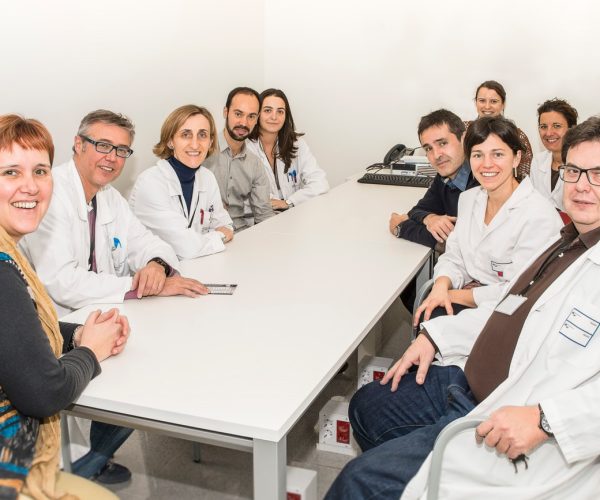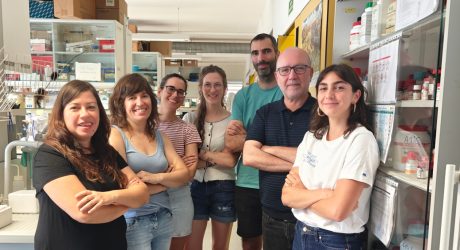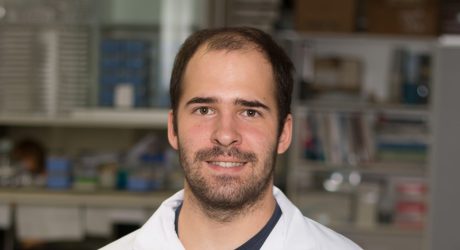Researchers from the IISPV, the Sant Joan University Hospital in Reus and the URV develop 2 software todiagnose diabetic retinopathy in the early stages andprevent the disease from becoming irreversible
- When the disease worsens and can no longer be corrected even with glasses, it ends up preventing the person from leading a normal life: they have to stop driving and working.
- These softwares have been developed by studying a diabetic population in Spain monitored for 10 years, so the prediction they make about the disease isvery accurate.
Scientific advances resulting from studies led by the Pere Virgili Health Research Institute (IISPV), the Sant Joan University Hospital of Reus and the Rovira i Virgili University (URV) in the field of ophthalmology have allowed the development of two software for the early diagnosis of diabetic retinopathy. It is a common eye condition in people with type 2 diabetes and is the leading cause of low vision in the population under 60. If not treated in time, it can become irreversible: it can no longer be corrected with glasses and those who suffer from it must stop doing very common activities, such as reading or driving.
This technology is currently being used in a pilot phase at the Sant Joan Hospital in Reus and in different primary care centers in the province of Tarragona. These health centers are where patients go to get tested to detect it and monitor the disease. Through a retinograph or non-mydriatic camera, photos are taken of the fundus of the eye, the affected part. These softwares are integrated into their clinical history, thus allowing a more accurate assessment of the disease and its treatment. They will also allow it to be diagnosed in the most incipient phase, thus preventing it from getting worse and becoming serious, completely conditioning the life of the person who suffers from it.
Innovative technology
The first of these softwares has been named MIRA and is a reading algorithm that records patient data extracted from the photo of the fundus of the eye. It detects whether they have diabetic retinopathy, the degree of evolution (mild, moderate or severe) and, in the case of patients without injury, whether there is a risk of developing it. The MIRA program, unlike other software currently on the market, is capable of detecting diabetic retinopathy in the initial stages, when it is still reversible, and thus prevent it from getting worse. “Diabetic retinopathy in its early stages, if we control it metabolically, that is, by taking care of glucose levels and blood pressure, we can stop it and even reverse it, without having to resort to aggressive intraocular treatments, which is what happens in the advanced stages, in which we have to give intravitreal injections (administration of medications inside the eye to treat eye diseases and protect vision) or have to intervene by performing surgery, etc.”, explains Dr. Pere Romero, head of the Ophthalmology Research Group, which, together with the Department of Computer Engineering and Mathematics of the URV, have developed this technology.
The second algorithm is known as RETIPROGRAM and is a prediction algorithm: it is set with 9 indicators (age, sex, weight, height, blood pressure, time of evolution of diabetes, its metabolic control, hemoglobin levels and kidney condition) to assess the state of the patient’s disease, and, consequently, to determine how often they should go to their health center to have the control test. “This last software will therefore help us to rationalize this type of test: we will do them in a personalized way, when it is assessed that it is necessary to do them, and not when the health system establishes it by default”.
This algorithm is the first in Spain that has been developed by studying a population of diabetic patients in the territory (more than 120,000, controlled over 10 years), with which the prediction of the date to do the control is very accurate.
This research has received funding from the Institut de Salut Carlos III (references PI21/00064, PI18/00169, PI15/001150 and PI12/01535) and has been co-financed by the European Institute of Innovation and Technology (EIT) Health and the European Union (references 220718 and 230123), giving rise to the creation of the spin-off RetinaReadRisk S.L. (https://retinareadrisk.eu/), in February 2023.




